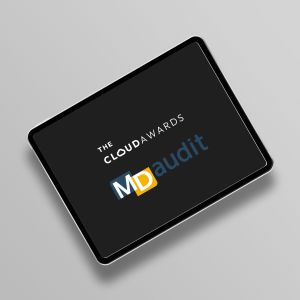For decades, software has been billed as the panacea for any business challenge: Buy this software and solve your problem.
But we all recognize the reality that technology can only do so much and only what it’s programmed to do. Revenue cycle management (RCM) software, for example, can point out anomalous codes, missing modifiers, and areas for improvement. But the next steps — fixing the issues in the now and determining how to correct them going forward — are squarely within the purview of billing and auditing staff. It’s a true partnership between people and technology that makes medical billing software valuable.
Revenue Cycle Management Software Drives Organizational Value
A misunderstanding persists in the industry that revenue cycle management or revenue integrity software will lead to a reduction in headcount. When fully implemented and used to its maximum capacity, the value of the software will more than pay for the personnel, who can do much more work than before in the same timeframe.
For example, resolving accuracy issues in billing and coding operations can help a hospital retain as much as 25% of total revenue. Auditing claims can be a cumbersome and time-consuming process, which can make auditing every provider on a set schedule difficult to complete and insufficiently timely to spur real change.
With auditing software, users can open a prospective or retrospective audit with a few clicks and automatically compile the necessary information to save time. By completing audits quicker and in a more judicious manner, errors can be caught and corrected much earlier, helping an organization retain revenue. What’s more, auditing personnel can spend more of their time training and retraining staff on proper billing and coding procedures, which increases revenue going forward through the implementation of best practices and approved procedures.
By saving time on each audit, staff can complete more audits: for example, auditing every provider on a set schedule (but at least once a year) while conducting spot audits when anomalies or unusual patterns are detected. By increasing audit volumes, the quality of claims is improved, which in turn speeds the revenue cycle and boosts the bottom line by reducing rejections. It also provides more trends data which can be used for targeted education and to ensure claims are correct before they leave the facility.
Revenue Integrity with a Human Touch
Every organization has its unique setup, challenges, and opportunities for coding, claims, and revenue integrity, which makes compliance and auditing staff the experts within their organizations. The right auditing software helps cut through the noise and distractions to help these experts discover areas where they should focus their efforts to preserve revenue across the organization.
However, when it comes to achieving revenue integrity, humans play a critical role in the coding, billing, and auditing processes. Revenue cycle management software can show trends, but it’s up to people to conduct audits, determine root causes, create remediation plans, and train/retrain appropriate staff.
Recognizing relationships among people, technology, and processes, and among the compliance and revenue integrity professionals who use auditing software, is crucial to success. That’s why it’s important to find a vendor that takes a consultative approach throughout the discovery, sales, implementation, training, and post-implementation processes.
The MDaudit Approach
For more than 25 years, MDaudit has been building and refining its revenue cycle management and medical billing software in close collaboration with customers. Their input and feedback are invaluable to guiding the development of its software, planning future enhancements, and prioritizing those enhancements to deliver maximum value as quickly as possible.
At the same time, they provide industry-leading support so clients don’t have to face complex challenges or questions alone. In addition to training at the time of implementation, each client has a dedicated client success manager to answer questions or provide guidance on how other organizations have surmounted similar challenges or maximized similar opportunities. An experienced customer support team is on hand to answer any questions, and users can also access the MDaudit peer community to discover or share best practices, tips and tricks, and ways to get the most out of the software.
Contact us to learn more about the powerful people-technology connection.








